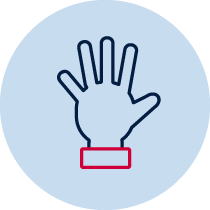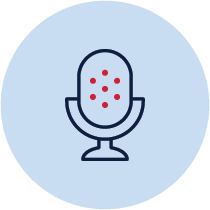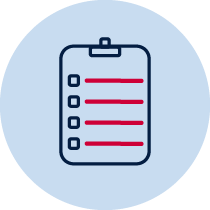Data – Flip or roll
Students use tally marks to assist with data collection, display data using a list or table, andinterpret information presented in a list or table.
 |
 |
 |
 |
| Practical | Resource required | Verbal recording | Take photo |
 |
 |
 |
|
| Teacher observation | Collaborative | Whole class |
Statistics and probability – data 2
- describes mathematical situations and methods using every day and some mathematical language, actions, materials, diagrams and symbols MA1-1WM
- uses objects, diagrams and technology to explore mathematical problems MA1-2WM
- supports conclusions by explaining or demonstrating how answers were obtained MA1-3WM
- gathers and organises data, displays data in lists, tables and picture graphs, and interprets the results MA1-17SP
Syllabus content descriptors
- Collect, check and classify data (ACMSP049)
- Create displays of data using lists, tables and picture graphs and interpret them (ACMSP050)
National Numeracy Learning Progression Mapping to the NSW mathematics syllabus
Interpreting and representing data (IRD1-IRD3) - MA1-17SP gathers and organises data, displays data in lists, tables and picture graphs, and interprets the results
Materials
Suggestions for flipping and rolling:
- 1 coin, a double-sided counter (e.g. red/yellow) or a die with only two numbers equally represented on all 6 sides.
- Paper and pencils, whiteboards and pens made available for recording flips, rolls and findings from the task.
Teacher instructions
The purpose of this task is to gauge students’ understanding of
- using tally marks to assist with data collection
- displaying data using a list or table
- interpreting information presented in a list or table
Students are to work with a partner using one resource. They take turns to flip their coin, double-sided counter, or roll the dice 15 times. Each student needs to record both their partner’s and their own turn to keep a tally of heads, tails, colours flipped, or numbers rolled.
They communicate their findings with their partner and record (either verbally on a device or in writing) what they noticed about their recordings. For example, “We noticed that heads came up a lot”, “It was about even, the counter landed on red the same amount of times it landed on yellow”, “I think that tails might win next time”.
Students may produce a table and record each turn showing an understanding of the concept- create displays of data using a list or table
| Heads | 1 | 1 | 1 | ||||
|---|---|---|---|---|---|---|---|
| Tails | 1 |
| Red | 111 |
|---|---|
| Yellow | 1111 |
Prompts
Why have you recorded your turns like that? (Students may draw their object, H and T, colour or number on the die).
Why did you choose that way? (Students may draw a line of tally marks that are not defined as groups of five). Is there another way that you could record your turns?
Some examples could also be shared, by students, as a springboard into other lessons.
Teacher to observe how students complete this task and note teaching points and areas for further investigation
Student instructions
- Take turns to flip a coin, double -sided counter or roll a die.
- Record each turn - both yours and your partners.
- After 15 times, share what you noticed with your partner.
- Write (or use a recording device) about what you found out or what you noticed.
Possible areas for further exploration?
Students
- use a form of tally marks that are not defined into groups of five
- use a variety of pictures or symbols to represent their data
- use numbers to represent each amount rolled in a line 1121221
Possible misconceptions
- cannot interpret the information represented in their table
- cannot record observations based on their table.
- could create a table using tally marks, picture or symbol to represent each possibility
Where to next?
- Explicitly teach how to record tally marks.
- Complete the task again, using a different resource to collect data and ask students to use tally marks on their recording sheet. Determine how they do this.
- Explicitly teach how to use one symbol or picture to represent an object.
- Explicitly teach how to create a table to record information.
- Work with targeted students on interpreting the results from a data collection.
- If students successfully create a table using tally marks or a picture or symbol to represent each possibility, then ask them to create a graph with questions to share with the class.
Adapted from Teaching and assessment resource Stage 1 data – tally marks
Syllabus
Please note:
Syllabus outcomes and content descriptors from Mathematics K-10 Syllabus © NSW Education Standards Authority (NESA) for and on behalf of the Crown in right of the State of New South Wales, 2012